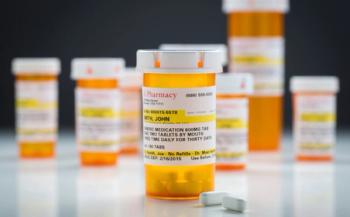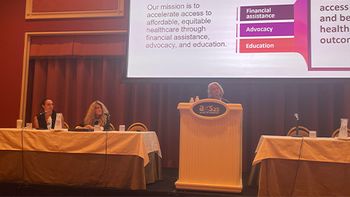
Personalized Medicine at a Crossroads
Personalized medicine has reached a crossroads where fundamental change is not only appealing but essential, write Klarissa Hoday, Francesca Boggio, and Aleksander Ruzicic.
With so much discussion around personalized medicine in recent years, it is easy to forget that we are still in the infancy of this new era. Indeed, no universally agreed definition of personalized or precision medicine even exists (instead we have numerous often contradictory versions). Healthcare systems are notoriously slow to adapt to change, so perhaps it is not surprising that most are not well set up to efficiently assess and reimburse innovative personalized medicines. However, we have reached a crossroads where fundamental change is not only appealing, but essential.
Personalized medicines are a burgeoning market (already worth $232 billion in the US alone and projected to grow by 11 or 12 percent every year), but with healthcare systems struggling to fit square pegs into round holes by using outdated reimbursement frameworks for new innovative medicines and their companion diagnostics, we are seeing patient access jeopardized, and industry reward for innovation curtailed.
This is even more pressing now that personalized medicine is expanding into more therapeutic areas. Personalized medicine has been synonymous with oncology, which has driven the huge medical progress made in the area. But its potential impact is starting to widen. In a recent report, McKinsey identified immunology / transplant, CNS, pediatrics, pre-natal, infectious diseases and cardiovascular as therapy areas with the greatest potential in the next 10 years.
Already we are seeing the first successful implementation of personalized medicines outside oncology, whether stratification is used to identify patients who may be at risk from dangerous side effects (e.g. the 5% of patients with HIV who may suffer a potentially fatal hypersensitive reaction to abacavir), or to identify those who would benefit most from a particular therapy (e.g. the 4-5% of patients with cystic fibrosis who have an underlying genetic mutation targeted by ivacaftor).
Given the higher costs compared to the current “gold standard” treatments, the need to demonstrate cost-benefit will only increase. But despite the inherent promise of personalized medicine to cut away inefficiencies (by not wasting medicines and false hopes on those who would experience no benefit), demonstrating a meaningful cost-benefit in limited groups of patients is challenging with the current regulatory and reimbursement frameworks in place.
From innovation to impasse
Because most healthcare systems do not have adequate regulatory and reimbursement frameworks to assess the value of innovative medicines and companion diagnostics, we are facing a potential impasse; what is the motivation for pharmaceutical companies to produce personalized medicines if the systems in place are not adequate to review and reimburse them appropriately.
Why isn’t this happening? Well, first of all we are in unchartered territory and all stakeholders are still feeling their way forward. When radical change is required, it takes strong leadership to drive it. Payers are reluctant to drive revised assessment and reimbursement because from their perspective, there is still too much uncertainty; the value of personalized medicine has not been clearly defined or demonstrated. Payers trade uncertainty with price – the more uncertainty that exists, the less reimbursement they will give.
Policy makers have the clout to make a difference, but often have too little information on the topic to be able to recommend change. They are concerned about the risks associated with the area, from potential ethical issues, such as who will have access to and own databases of personal genetic information, to the potential impact on health insurance and employability of patients.
As a result there are currently almost no reimbursement frameworks in place to perform joint assessments of medicines and companion diagnostics. Broadly speaking, countries fall into one of three categories – a separate assessment such as in Germany, a more coordinated assessment like France, or an entirely joint assessment such as that in the UK – but the latter is an exception in the EU.
There is also a lack of alignment between all relevant stakeholders early on in the process, particularly between diagnostics and medicine manufacturers, and payers and HTAs.
So, we are stuck at the crossroads – where do we go from here?
A cross-stakeholder roadmap
In November 2014, a multidisciplinary workshop – titled ‘Access to personalized medicine: building a multi-stakeholder roadmap’ – was held to help answer this question. The multinational workshop brought together representatives of several stakeholder categories (see table below). All views presented were personal and not necessarily those of the represented institutions.
Although the perspectives and priorities understandably differed among stakeholders, certain clear threads ran through the discussions, highlighting agreed areas of focus which, when pieced together, provide a roadmap of how to navigate the way forward (see image below).
The group agreed that a joint approach is essential, but better clarity is needed in terms of roles and responsibilities; if new frameworks are required, policy makers should be able to rely on input from stakeholders with hands-on experience. Clarity of terminology is also important; for example, Dr. Christian Götting suggested that “the term ‘stratified medicine’ is preferable to personalized medicine”.
The ‘value’ of personalized medicine needs to be assessed and better defined. The onus here is on the industry, HTAs and payers to work together to find new ways of demonstrating, assessing and rewarding the value of personalized medicine. Beyond randomized controlled trials (RCTs), which are generally complex, time-consuming and expensive, other sources of evidence are also acceptable if studies are properly designed and conducted. This is essential for all concerned – payers and HTAs want to ensure industry are not just hiking prices because of smaller population sizes and to be able to clearly distinguish between “science or marketing”, as Prof. Livio Garattini put it. Industry, meanwhile, needs to feel confident that payers understand the value of their innovations. As Diego Ossa said; “If a company doesn’t understand how it will return their investment, why should they invest in the development of additional evidence?”
Similarly we need to better define the value of the companion diagnostics. The Grading of Recommendations Assessment, Development and Evaluation (GRADE) states that the best way to assess companion diagnostics is through randomly controlled trials – but these can be complicated and expensive. Alternatives should be considered to better demonstrate the ‘value’ of the companion diagnostic, particularly clinical utility data.
Providing more certainty and reassurance was identified as vital to win over payer and policy maker audiences. Policy makers in particular need support to help put personalized medicine higher on government agendas. “For most policy makers, personalized medicine is still an extremely vague concept, which creates a climate of uncertainty and doubt,” said Louis-Charles Viossat. They need a better understanding of the situation, reassurances on cost, clearer models demonstrating the framework changes and upfront investment required, and answers to any potential ethical issues.
It is important to recognize and learn from best practice where it exists. The NICE Diagnostics Assessment Programme (DAP), for example, focuses on the evaluation of innovative medical diagnostic technologies in order to ensure that the NHS is able to adopt clinically and cost effective technologies rapidly and consistently. Forty two technologies have been assessed to date, of which about 60% have been recommended. It represents a step forward in the assessment and guidance on technologies.
Perhaps most fundamentally of all, all stakeholders need to align on guidelines for reimbursement and HTA framework adaptations. We need to develop international and national assessment methodology guidelines for coordinated assessment of therapies and companion diagnostics. “Ideally we need a global model that can be implemented locally”, said Seong Chen, with each country identifying which value proposition works best.
Finally, an earlier alignment process between industry and other stakeholders – particularly payers – should be introduced. Industry needs a much better understanding of policy maker, payer and HTA uncertainties and to assist in resolving these early on. As Omar Ali put it; “There’s no point baking a cake and asking if people like it – it’s better to start asking them when pulling the recipe together”.
The time is right, now
The personalized medicine market will continue to grow for the foreseeable future, driven largely by targeted biologics in oncology, but also increasingly by innovative products in several other therapeutic areas.
The issues that exist with assessment and reimbursement of personalized medicines and companion diagnostics have, to an extent, been hidden from view with the predominance of oncology products; patient access to cancer medicines is politically sensitive, and strong mobilization of patient advocacy groups and general public has facilitated relatively good access to precision medicines to date.
With research well underway to aid patient stratification in chronic conditions which affect large populations, such as asthma (with novel anti-IL-5 and anti-IL-13 therapies), thrombosis (via new tools to characterize clotting status quickly at a molecular level), and diabetes (via molecular tests for predicting those at risk and to signal earlier interventions), the need to properly prepare healthcare systems for the promising new era of precision medicine is now an urgent one.
All stakeholders will need to work together to agree on the roadmap ahead, to ensure that medicines and companion diagnostics can be evaluated in a coherent way which reflects the true value they bring.
About the Authors
Klarissa Hoday is Principal (
Newsletter
Lead with insight with the Pharmaceutical Executive newsletter, featuring strategic analysis, leadership trends, and market intelligence for biopharma decision-makers.





